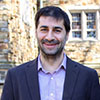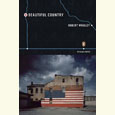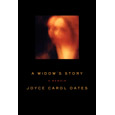Hoop Dreams — and Nightmares
Keith B. Wood explores the meaning of basketball in Memphis
In Memphis, you often hear about how basketball brings the city together. Among the cheering throngs at the FedEx Forum, you will find people of all stripes, united in their fervor for the NBA’s Grizzlies or the University of Memphis Tigers. But can a sport straddle Memphis’ racial divide? In his new book Memphis Hoops, Keith Wood investigates the city’s history of race and basketball — and tells a complex, riveting story.
 Wood teaches history at Christian Brothers High School. A former teacher and basketball coach at Millington and Sheffield high schools, he earned his Ph.D. in history at the University of Memphis. Memphis Hoops is based on his dissertation. Full disclosure: I was his graduate adviser.
Wood teaches history at Christian Brothers High School. A former teacher and basketball coach at Millington and Sheffield high schools, he earned his Ph.D. in history at the University of Memphis. Memphis Hoops is based on his dissertation. Full disclosure: I was his graduate adviser.
He answered questions via email from Chapter 16:
Chapter 16: The central thread in Memphis Hoops is the story of Larry Finch. Why him? What can Finch tell us about the culture of basketball and race relations in Memphis?
Keith B. Wood: Larry Finch’s basketball career spans an era in the city from the assassination of Dr. King through the election of the city’s first Black mayor. Many in the Orange Mound community urged Finch to play elsewhere collegiately. Instead, he chose to become Memphis State’s first star Black basketball player. The Tigers played their games at the Mid-South Coliseum, one of the finest arenas for college sports in the country. The coliseum allowed white and Black Memphis to congregate to cheer on Finch and the Tigers since it was situated geographically between white and Black neighborhoods in Memphis. In 1973 Finch led Memphis State all the way to the NCAA championship game, where the Tigers lost to an undefeated UCLA team led by Bill Walton. That tournament run generated incredible enthusiasm among both white and Black Memphians.
But outside of the arena, Memphis remained divided. Federal courts ordered busing plans to desegregate schools, which in turn led to white flight. Nevertheless, the white establishment continued to use Finch to quell the storm of political upheaval taking place before their eyes. Finch was a symbol of hope for a city torn by racial strife. The university, its fan base, and many in the city believed that one man could unify a city through sport. Finch believed that his basketball career was one way he could make Memphis a better place. Finch did unite the city behind its love for basketball, but once the fans left the arena, they returned to a city divided and struggling over race.
Chapter 16: In one chapter, you train your lens on the city’s star-crossed franchise in the American Basketball Association (ABA). Why did pro basketball fail in Memphis?
Wood: The ABA had a reputation as more of a “Black” league than the NBA. It was known for its physicality and athleticism. The instability of Memphis’ ABA franchise mirrored the political instability in the city during this same period. Professional basketball exaggerated race. Collegiate basketball’s connection to the city and its protective role in raising young student-athletes allowed Finch to become a racial unifier symbolically, but the racial animus surrounding Black players was exposed more vividly on the professional level. In the 1970s, Memphis was a city at odds with its own racial identity.
 Chapter 16: Memphis Hoops readers might be surprised to find a chapter about the LeMoyne-Owen Magicians, who won the Division III national title in 1975. Why did you tell this story? How does it reinforce the larger ideas in your book?
Chapter 16: Memphis Hoops readers might be surprised to find a chapter about the LeMoyne-Owen Magicians, who won the Division III national title in 1975. Why did you tell this story? How does it reinforce the larger ideas in your book?
Wood: For years, the best Black players either played at HBCUs such as LeMoyne-Owen College, or they went north to play for schools that accepted integration on the playing field. By connecting the narrative of the 1975 LOC championship season with the myth that basketball healed the city of Memphis, it paints a more complete picture of race relations and sport in Memphis. Most white Memphians, even today, know little if anything about LeMoyne-Owen College basketball. LOC’s head coach Jerry Johnson learned the game from John McClendon, who in turn learned from the game’s founder, James Naismith. Johnson coached Verties Sails, who coached Larry Finch, who coached Anfernee “Penny” Hardaway. As LOC advanced through the 1975 NCAA tournament, their story remained hidden behind a veil of segregation. The 1975 Magicians remain the only NCAA men’s collegiate basketball champion [team] from the state of Tennessee. If basketball truly united the city, then the city would have supported LOC on its championship run.
Chapter 16: Memphis State basketball in the 1980s was something of a “best of times, worst of times” situation. The great squads included the 31-4 team that reached the Final Four, and yet, as you describe, it is an era of tragic hubris and missed opportunities. Why?
Wood: Coach Dana Kirk got himself in hot water, as he was plagued by a series of accusations, indictments, and investigations. At this same time, politically, the city’s old white establishment was fighting to maintain the status quo, while the Black community fought for greater inclusion. Over the six years that Kirk coached at Memphis State, the basketball program was mired in corruption, which reflected the scandalous nature of politics in the city. Memphis State was no longer the “Dixie Darlings,” as their 1957 team had been nicknamed, and there was nostalgia for the glory of 1973. Kirk had some incredible teams and made it to the Final Four in 1985, but by the end of his tenure in 1986, basketball became a symbol of all that was wrong in the city.
Chapter 16: The 2018 hiring of coach Penny Hardaway seems to have rekindled the civic enthusiasm for University of Memphis basketball. Do you see any key historic patterns in the reception to Hardaway’s coaching stint?
Wood: History seems to be echoing loudly enough that we need to pay attention. Larry Finch became head coach when Kirk left in disgrace, and he brought respectability back to the program. He recruited Hardaway, who like him, was a celebrated local star who chose to play at Memphis State. With Finch at the helm, Hardaway guided the Tigers to the Elite 8 and then had a successful NBA career. Hardaway’s passion for the game and his city led him to return home and begin investing in the community where he grew up. Memphians longed to return to the glory days of Larry Finch and Ronnie Robinson in the 1970s, or Keith Lee and Andre Turner in the 1980s. Former Tiger players, city dignitaries, and Finch’s widow were on hand to see Hardaway announced as the head coach at the University of Memphis. In a city that remains as divided racially over public schools today as in 1973, Hardaway creates an illusion of unity behind Tiger hoops.
Although much has changed in the Bluff City, much has stayed the same. Memphis Tiger basketball remains one of a few places where white and Black people can come together as one, if only for a moment. But in college basketball, the ending is rarely a triumph. Even Larry Finch, who rescued the Tigers program and had sustained success, was fired in 1997. Someday, unfortunately, the university’s iconic hero, Penny Hardaway, will be judged as harshly as Finch once was.

Aram Goudsouzian is the Bizot Family Professor of History at the University of Memphis. His most recent book is The Men and the Moment: The Election of 1968 and the Rise of Partisan Politics in America.





